Chiwara, Ci Wara or Antelope Headdress
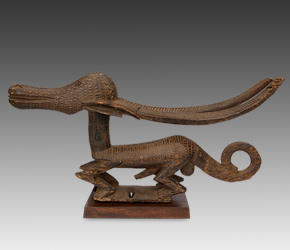 |
|
"Chi Wara headdresses can be categorized into three distinct styles. There is the vertical style, horizontal style and abstract style Chi Wara headdresses vary regionally"
The Bamana people of Mali hold in high regard their livelihood, which is primarily agricultural farming. In their mythological history, their ancestors learned to cultivate soil from a half man/half antelope creature called Chi Wara. In honor of Chi Wara, the Bamana carve elaborate headdresses to be used in dance ceremonies. The headdresses are known by the same name.
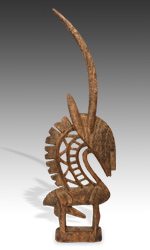 |
|
Dance ceremonies utilizing Chi Wara were once secret male ceremonies designed to instill in young boys the importance of diligent farming techniques. Ultimately, the traditions of the Bamana changed and the ceremonies surrounding Chi Wara included females as well. Today, Chi Wara ceremonies involve entire villages and celebrate the importance of agriculture to the community.
The dance masquerade in which Chi Wara headdresses appear is performed by champion farmers who are selected as “maskers." The headdresses are attached to woven raffia caps and their bodies are covered in raffia costumes. The maskers make leaping movements like antelopes and hoeing movements to signify working in the fields. As the farmers dance, females imitate their movements and sing praise songs.
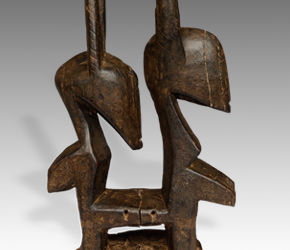 |
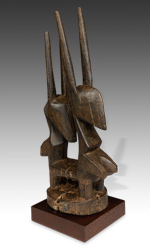 |
The involvement of females in Chi Wara ceremonies symbolizes the importance of marital cooperation in successful farming. It is also meant to teach younger generations the importance of cooperation and community. Chi Wara headdresses are typically carved in male and female forms. This pairing of male and female also illustrates the connection between sun and earth to ensure a good harvest.
All Chi Wara activities are governed and sponsored by the Tye Wara Society. The word “tye” means work, and “wara,” animal. The purpose of the society or “association” is to solicit the blessings of Chi Wara, teach essential farming skills and promote festivals and contests. Today, the Chi Wara headdresses used by the association are some of the most widely known and appreciated forms in African art. To many, they are considered a classical form of African art.
The Chi Wara headdresses can be categorized into three distinct styles. The “vertical” style is distinguished by openwork carving representing the mane and neck of the antelope. The second style is elongated and called “horizontal.” The final style is described as “abstract." The represented antelope is recognized by the antlers, but little else. These are the rarest forms.
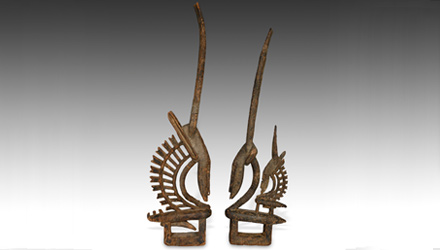
|
|
Download this Article: Chiwara (Ci Wara) Antelope Headdress.pdf